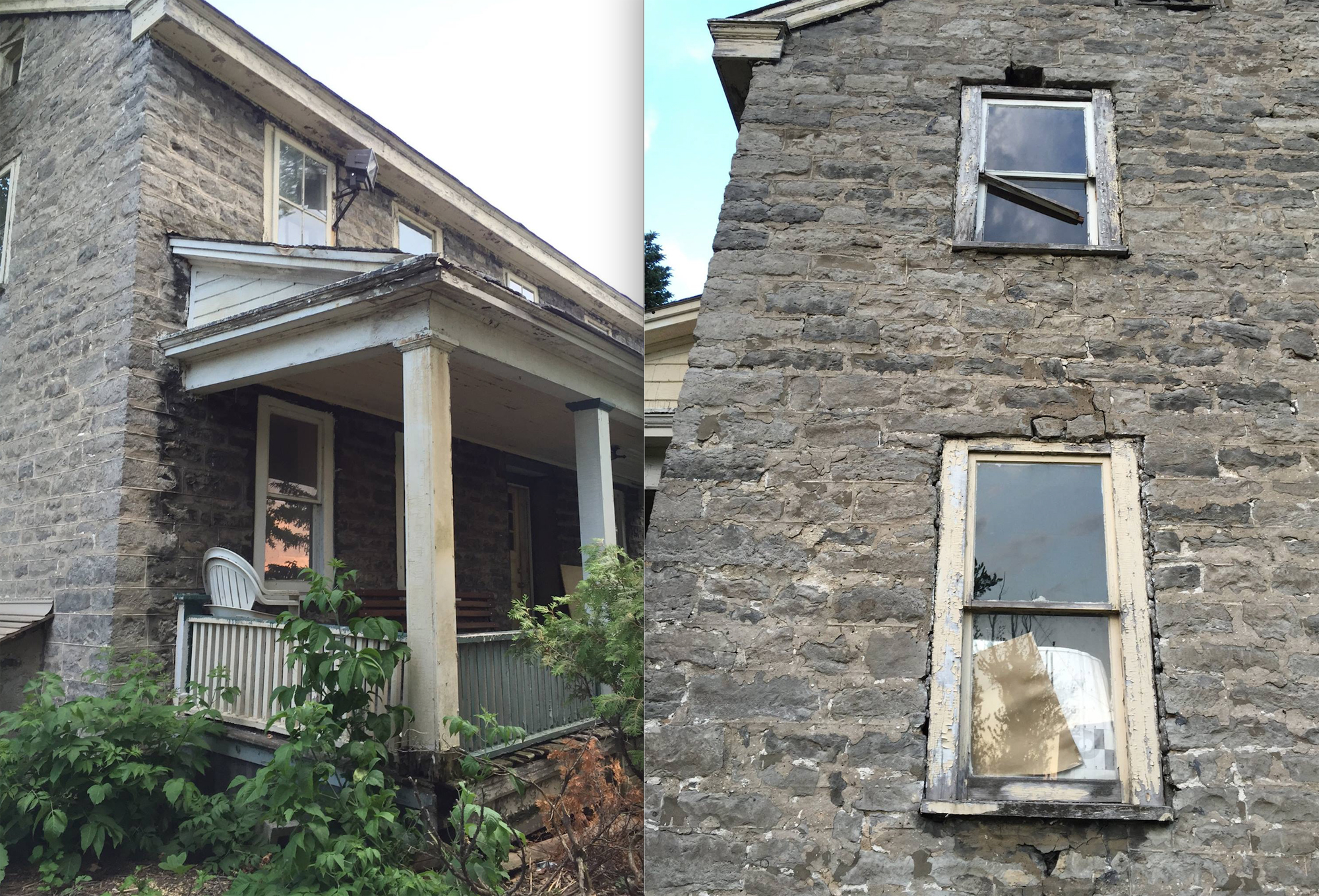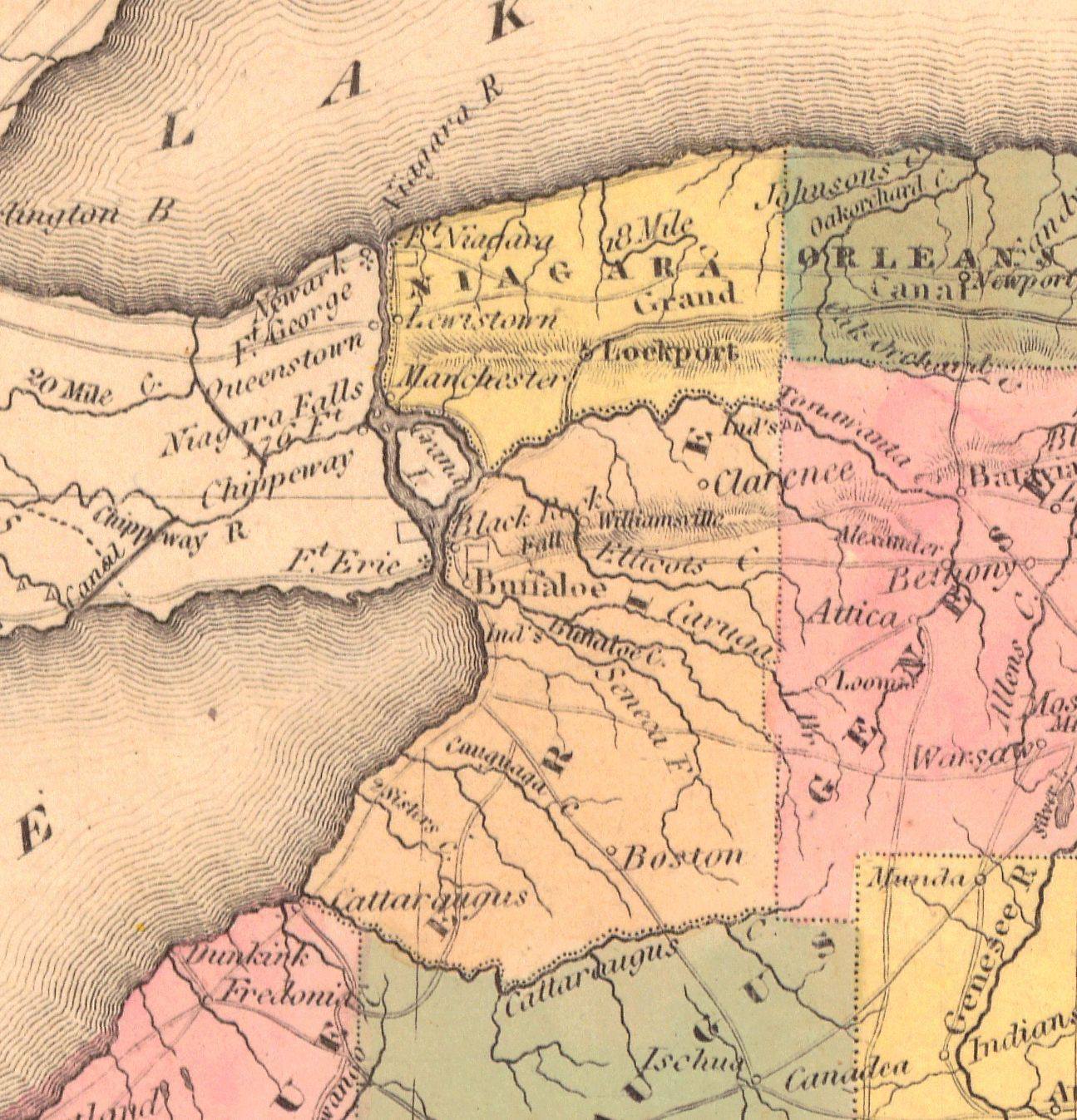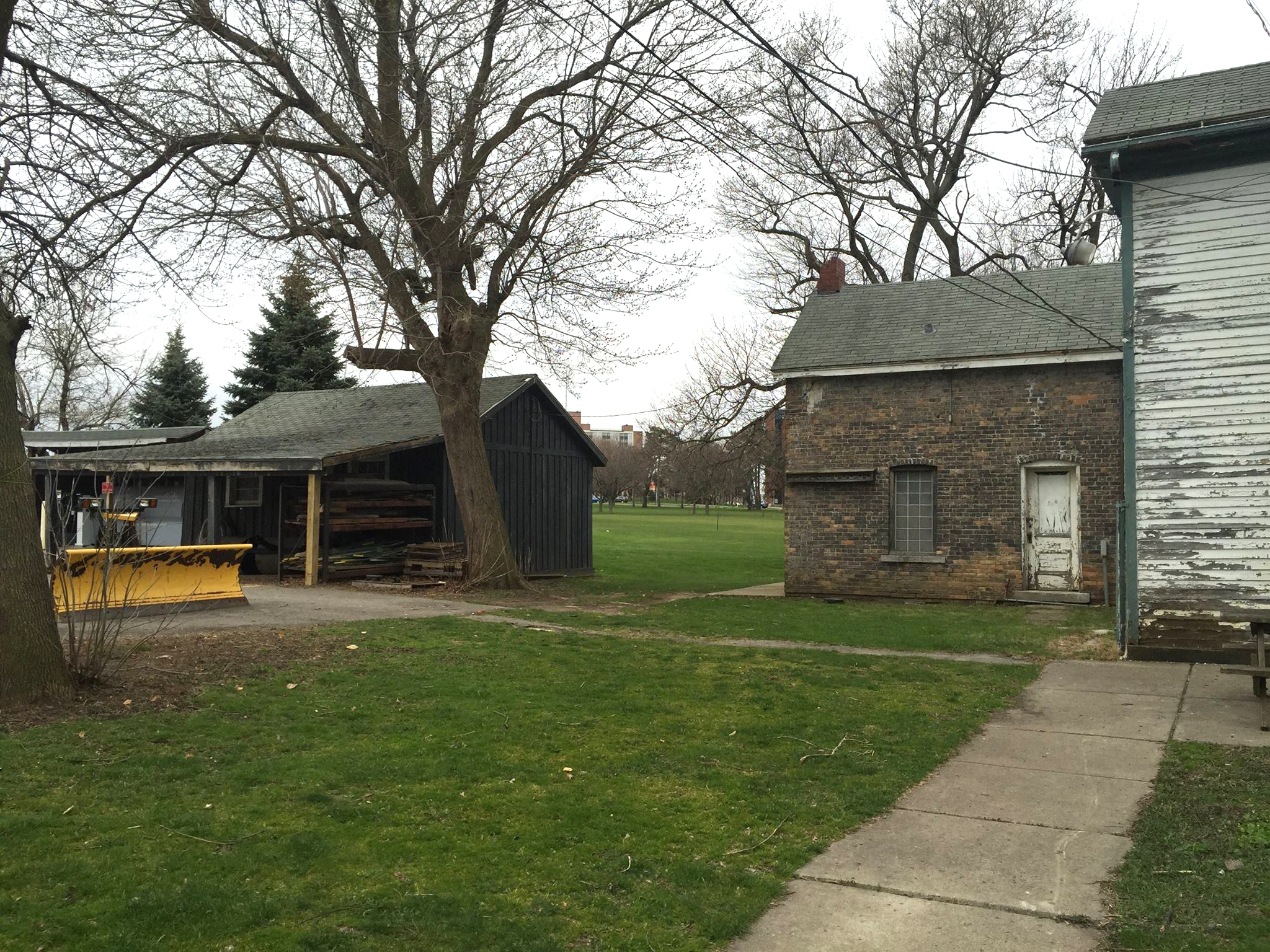1683: 4 ps. w/th "plaiding" qt. 125 yds
Of the people from the British Islands and Ireland, the Scots made up the majority of people who emigrated to New York from the 1680s - 1720s. A number of Scottish came to New York prior to the Queen Ann's Test Act of 1703 including Robert Livingston who arrived in the Town of Albany in 1674. John Spratt and John MaxWell were two others. However, after England took Sovereign control in 1674, aside from the Governor in NYC and the New Englanders on Long Island, it was primarliy through Scottish eyes the colonist understood England. They were that numerous.
I am often asked if Scots in America wore Scottish clothes. As someone who descends from the 18th Century Mcdougalds of North Carolina I am eager to find the answer too. However, one can only dress according to what was available. What was available was often defined by demand.
For 18th Century New York, in particular, the consumers were able to influence what merchants ordered, as they would completely snub something that was not culturally acceptable... like small sprigs of flowered cloth. The prerogative of New Yorkers were big bodacious flowers to the point that merchants returned the small sprigged cloth to London explaining it wouldn't sell. One merchant went as far as to draw - again - a large mass of a flower explaining it was to scale and not to send anything smaller. The London merchants must have though New Yorkers were hopeless, but New Yorkers - for as reserved as they were in business - wore their big bodacious flowers as though a tribal marker. We will circle back to this issue later, but it provides a glimpse into just how stubborn New York consumers were through the first half of the 18th Century. It may also be why onlookers noted that it was difficult to define the difference between the wealthy and the working class, because everyone looked middle class in their large printed silks, woolens and calicos. It also meant that people of various heritages could strut their stuff in the clothing of their mother country. And people of other heritages had no qualms about adding something different normally associated with a different heritage... like tartan !
Doing The Numbers:
While an exact number of people of Scottish heritage who immigrated to New York is not known, there was one Presbyterian church by 1650, four by 1700, 35 by 1750 and 50 by 1775 spread out across the Province. To put this in perspective, there were only 0, 2, 20, and 26 Anglican churches respectively. When looking for a persona with distinct clothing, textiles and a ton of fun... check out the Scots !
Number of Churches in the Province of New York by Denomination:
Year 1650 1700 1750 1775
Scot Presbyterian 1 4 35 50
Scot Calvinist 4 0 5 12
Eng. Anglican 0 2 20 26
Eng. Quaker 0 8 14 22
It is estimated that about 7, 000 Scotts emigrated to an English colony in America prior to the year 1700. Between 1717 - 1775, an estimated 200,000 Scot-Irish from Ulster Co. in Northern Ireland emigrated to America.
1753: Patrick Fisher, indićted of cutting out of a loom and stealing a tartan plaid, was, at his own desire, sentenced to be transported to America, and banished Scotland for life. - Scotts Magazine
A Wave of Scottish People:
After the English landed in 1664, then received sovereign control in 1667, Governor Dongan had a reasonable concern about the lack of immigrants from England.
Dated 1687: "I believe for these last 7 years past, there has not come over into this province twenty English Scotch or Irish families. But on the contrary on Long Island the people increase so fast that they complain for want of land and many remove from thence into the neighboring province." - Population History of New York City, By Ira Rosenwaike
While England had a difficult time getting English people to choose New York rather than New England or Pennsylvania or Virginia, the Scottish were more than happy to take the jobs that were available. They are listed as being weavers, cart drivers, and in other trades and labors.
NewEngland, Philadelphia and Virginia were more appealing to the English in part because an immigrant's new neighbors would have spoken English, as compared to the commonly spoken Dutch, Deutsch or French in New York. To do business in New York being bilingual would have been necessary.
Additionally, New England, PA, and Virginia also had large volumes of farming land available for mono-cropping (tobacco plantations, cotton plantation, corn or wheat farming)... New York has land that produced market gardens, orchards, tobacco and dairy cows which was less appealing. While many people of England were looking to purchase land or set up a shop, the Scot-Irish were looking for employment, and looked to a Province with fewer slaves.
With low immigration, came another problem, germs. The community experienced low immigration but high transient population that came into and out of town. The community developed immunity over time from repeat exposure to germs. However, for the immigrants who did make the trip, 1702 was devastating year, roughly 570 young and old died from yellow fever. In 1731, smallpox will take another 549 people. These are diseases that if a person survives, they will develop immunity.
Despite all this, the Scotts are hardy people. By the year 1700 there were four Presbyterian churches with Scottish and x-New England members plus enough Scots to support an additional 4 more Calvinist Churches. For those looking to do a 1670s - 1720s era persona, the Scottish are a great option !
Tartan, Scots' Cloth or Plaid mentioned in documents:
During my search I only found 18th Century documents including the poem from 1724. However, Jenn Scott supplied us with these references from the 17th Century. Her book, "Better is the Proud Plaid" takes the deep dive all the way back to the 17th Century using primary sources and is currently out in Amazon UK. It will be available to Americans in December... it is a must have for reenactors looking for well researched sources !
1618–33 Collie Highland Dress 10.
Their [sc. Highlanders'] habit is shoes with but one sole apiece, stockings (which they call short hose) made of a warm stuff of divers colours which they call tartane … A jerkin of the same stuff that their hose is of … with a plaid [etc.];
1699 Reg. Privy C. in Chambers Domestic Annals Scotl. III 126.]
Woollen stuffs of all sorts, … draughts, friezes, drogats, tartains, craips, capitations ' however certainly the gaelic references the time refer to the item of clothing - plaid and the cloth - tartan as checked or speckled
Some 18th Century mentions I found:
1724: I'll make ye a Propine, My Mither, honest Wife, has made it fine; A Tartan Plaid, spun of good hauslock Woo, Scarlet and Green the Sets, the Borders Blue, With Spraings like Gou'd and Siller, cross'd wi' Black, I never had it'yet upon my Back. - Miscellaneous Works of that celebrated Scotch poet, Allan Ramsay, By Allan Ramsay * Hauslock Wool, fine wool from the neck of the sheep.
1749: [The clothing] It consisted of a roll of light woollen, called a plaid, six yards in length, and two in breadth, wrapped loosely 'around the body, the' upper lappet of which rested on the left shoulder, leaving the right arm at full liberty; a jacket of thick cloth, fitted highly to the body; and a loose short garment of light woolen that went around the waist and covered the thigh. - 1749 The Monthly Review, Volume 45, by Griffin or 1773 Memoirs of Great Britain and Ireland. From the dissolution of the last ...By Sir John DALRYMPLE
1785: The Highland plaid is composed of a woollen stuff, sometimes very fine, called tartan. This stuff confifts of various colours, forming stripes which cross each other at right angles; and the natives value themselves upon the judicious arrangement ... -
The New Universal Traveller: Containing a Full and Distinct Account of All, By Jonathan Carver
1818: First time acted in Covent Garden in 1757, The Play "DOUGLAS" Character costumes: NORVAL - Green plaid jacket, kilt, and tartan, flesh-'colored' stockings and arms, breastplate, cap, and sandals. LORD RANDOLPH - Scarlet silk plaid jacket, ibid. GLENALVON - Green plaid, ibid. , Old NORVAL. Drab 'colored' doublet and breeches, plaid scarf, ibid. DONALD. Red plaid jacket, kilt and tartan, beast plate, ibid. -Dramatic Library, Volume 4 , 1818.
In these quotes we can see that "tartan" comes in a variety of colors. And in the 1724 poem a tartan plaid in this instance had - "Scarlet and Green the Sets, the Borders Blue, With Spraings like Gou'd and Siller, cross'd wi' Black...". These quotes give us snippets and clues.
Scots Cloth in Probate Inventories and For Sale:
Plaids likely started coming over with the first Scottish after 1674, though few in number at first they along with the locals created a demand for merchants and shopkeepers to begin selling tartan fabric. The Scottish likely wore their tradition clothing while living in NY just as most everyone else did. It was the kind of place, where you could go to a market and pick out a person's ethnicity simply based on their clothes even in the 1670s, '80s & '90s. However, others including German and Dutch were using tartan fabric for more mainstream clothing also.
1697: John sprat (Scottish) and Maria de Peyster (Dutch) were merchants and had 5 ps of Scotts Cloth valued at 2.10.00 in their NYC store. They also have 14 yards "remaining" valued at 2.14.00.
1695: Johannes "John" Clopper of NYC and of German heritage had "Scotts cloth" in his probate inventory.
1684: Wina van Hoven of NYC and of Dutch heritage had 1 black "Tartenel" Samare with "tocker" [tucker or modesty linen for across the top of stays] in her personal inventory. A samare is a pleated back robe, more like a coat when made of heavy material and more gown like when made of light material, with center front closure and no stomacher. By the 1680s, it could be as short as hip length or as long as mid-calf, never as long as the ankle. They are popular from 1580s to 1720s.
1682: The inventory of Joseph Taylor a merchant of NYC had "Item 22 yards of linen Cloath 55 d: 15 1/2 of fine Scotch "Cloath" 52 d" valued at 5.07.00.
A Scottish Merchant from Blastowne:
The merchant, John MaxWell was a member of the Scots Charitable Society in Boston however, he was making a move to NY. He died on a return trip to New York from "Blastowne" Scotland in 1682, aboard his shipped called Rebecca:
2 ps. of coarse cloth qt. 20 yes. 12 d yd... 1.00.00
4 ps. w/th "plaiding" qt. 125 yds at 9 d. yd. L1.0.0 ... 4.13.09
2 ps. coarse Serge 2 ps. qt. 36 yds. f. 3:12:39 yd 15 d... 6.00.09
The above "4 pieces with plaiding" is likely a cloth with checks upon it. A John Maxwell is listed as part owner of a ship named "Ann" along with John Borland a Scotsmen in Boston. The inventory that arrived in NYC from the ship, is not just a record of import from Scotland, it also happened to include his personal clothing including 1 feather bed 1 "baluster" & pillows, 10 old shirts, 1 black velvet cap furred, plus...
"2 Cloth Suits with 24 doz. [Buttons ? and ] 11 plate Buttons and 9 p[r] of tartan hose 15 d ... 0.11.03"
The inventory also included kersey, stuff, cloth, coarse cloth, and serge... so we know that even if the "plaiding" was not checked, it was not one of the other types of cloth mentioned.
Some Extra Citations of Interest:
In 1745, there was an issue where a bundle of cloth would have a "Scotts Cloth" on top and English made cloth under it... which did not go over well. The Scottish wanted only their cloth to be sold under the label of "Scots Cloth"". "The Present State of Scotland Consider'd: and Its ... Sinking Condition Charged Upon the Conduct of the Landed Gentlemen, &c. Shewing ... that the Only Mean of Relieving Their Estates ... is by Their Joining Together to Promote Home Manufacture, Etc", Scotland, W. and T. Ruddimans, 1745


With this in mind, it might be advisable to take into consideration the pride of the Scots when portraying colonist. In 1746, the following order was given to exclude Scottish clothing for people in "...his Majesty's forces..." and can be found in "Anno Regni Georgii II. Regis Magnae Britanniæ, Franciæ, & Hiberniæ, Vicesimo Primo ... (An Act to Amend and Enforce So Much of an Act Made in the Nineteenth Year of His Majesty's Reign, as Relates to the More Effectual Disarming the Highlands in Scotland ... )" by Adrian Watkins, 1748.
1780 - Highland Wedding David Allan (1744-1796)
A Note on Swords:
The Scots used a "two handed swords" in the 16th Century along with arrows for defense in the early years but switched over to pistols and "broadswords" in by the 17th Century. - "A Description of the Western Islands of Scotland: Containing a Full Account ...", 1703 By Martin Martin.
Broadswords were brought to 17th Century New York. Our merchant John MaxWell had a few other items. The goods included: "1 Gunn 2 Carbines; 3 broad swords". Plus, in with the bridle and livery clothing was "a silver hilt sword" likely his personal cavalry sword which would only have one side of the blade sharpened as compared to duel blades on the broadsword. Swords like most goods were coming in from far and wide... remember the Japanese sword?
"Swords" are commonly mentioned in New Netherland and New York however, however rapiers are most often cited. From most common to least: Rapier, Sword, Cutlas, and Hanger in the 17th Century definitions. A few of the "swords" are associated with livery or bridles and saddles but it is not common.
For events targeting the second half of the 17th and first half of the 18th... dressing with tartan hose and plaid is a great way for reenactors to connect with their audiences ! Just mind the accents...
To all my McDougald kin down in North Carolina:
1724:
I'll make ye a Propine,
My Mither, honest Wife, has made it fine;
A Tartan Plaid, spun of good hauslock Woo,
Scarlet and Green the Sets, the Borders Blue,
With Spraings like Gou'd and Siller, cross'd wi' Black,
I never had it'yet upon my Back.
- Allan Ramsay


































